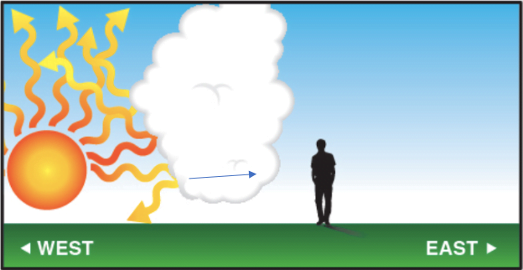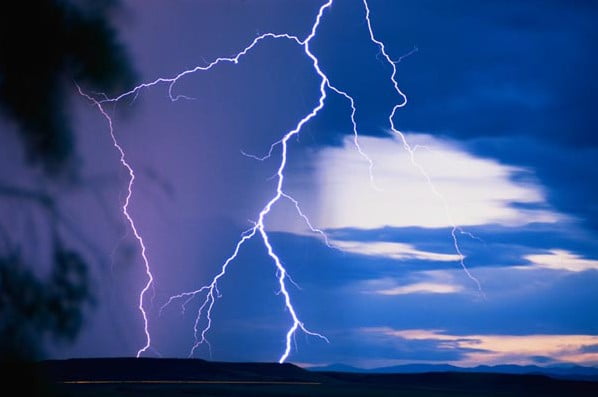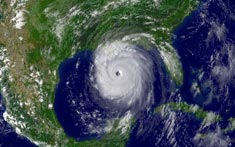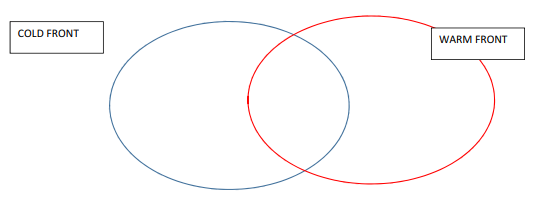

This resource links to Figure 11.12 in the IPCC report of 2021. The aim of this resource is to answer the question how often will a heatwave hit the UK?
It was written with the Royal Geographical Society with IBG.

Box and whisker plots
Figure 11.12 (see Appendix B) is a box and whisker plot. The graph highlights that extreme temperature events are forecast to increase in the twenty-first century. Extreme temperature events are defined as the daily maximum temperatures that were exceeded once during a 10-year (or 50-year) period.
The dataset for Figure 11.12 is from the paper Changes in Annual Extremes of Daily Temperature and Precipitation in CMIP6 Models by Li et al., 2020. An extract of the data is shown below in Table 1 in Appendix A. The numbers in parenthesis ( ) and square brackets [ ] show respectively the central 66% and 90% uncertainty ranges of the estimated changes in annual maximum temperature, from identified warming level ‘windows’.
The warming of annual maximum temperature events is more uniform over land and increases linearly with global warming. There is high confidence that the magnitude of temperatures extremes will continue to increase more strongly than global mean temperature.

Figure 1 the European heatwave of 2021, heat is becoming more extreme and more frequent © University of Maine
The temperature at which an event is classed as a hot extreme is going up (faster than the mean temperature). In the mid-latitudes (between 30° and 60° north and south) the strongest warming is expected in the warm season, with an increase of up to 3°C for 1.5°C of global warming. This has led to events such as the ‘merciless’ temperature spike in Russia, and the ‘heat dome’ over North America in June 2021. The highest increase of temperature in the ‘hottest days’ is projected for some mid-latitude countries and semi-arid regions, such as in North America.
- The frequency with which hot events occur is also going up. Study Table 1 in Appendix A. Using Relative frequency change for a 1.5°C, 2°C and a 4°C future, draw a box and whisker plot for global land, with 90% uncertainty ranges. Use the following steps to draw your graph.
a. Draw an x axis and label Global warming above 1850-1900 (°C).
b. Draw the y axis and label Relative frequency change (for one in a 50-year events).
c. Identify the median (the middle) of the data set (which is given to you).
d. Use the 66% uncertainty data (parenthesis brackets) for each box plot.
e. Use the 90% uncertainty data [square bracket] for the whiskers.
In Europe the evidence predicts an increase in the frequency and intensity of hot extremes (warm days, warm nights, heat waves) and, in reverse, a decrease in the frequency and intensity of cold extremes. Heat wave increases will be greater over the south Mediterranean and Scandinavia with southern European cities expected to suffer the biggest increases in maximum heat wave temperatures.

Figure 2 extreme heat is afflicting Europe more regularly © Fabian Keller Unsplashed
2. Why do cities experience extreme heat more frequently?
3. Now repeat the same activity, graphing Relative frequency change, for the ocean dataset.
Whilst heatwaves will increase across Europe and in the UK, there will still be extreme cold in the future. It is a common misconception to think that, as the climate changes, we will only experience warm weather and extreme heat in the twenty-first century. In fact, the climate distribution will change. Extreme cold will still happen, just less frequently. Figure 3 below illustrates this misconception with a probability curve showing climate likelihood and temperature and, underneath, the change from our previous climate to a warmer one. Both the the threshold temperature for an event to be considered extreme, and the frequency of high temperatures, rise in a warming climate.


Figure 3 climate graphs © The Royal Meteorological Society Weather and Climate: A Teachers’ Guide
Further work
- Li et al., 2020. Changes in Annual Extremes of Daily Temperature and Precipitation in CMIP6 Models
- BBC news What Europe’s cities are doing to handle heatwaves
- Carbon Brief Chances of ‘record-shattering’ heatwaves to soar without urgent climate action, research warns
- Guardian news ‘Record-shattering’ heat becoming much more likely says climate study
- Make sure you know what to do, Hot weather and its impacts from the Met Office
- By the end of the century, three-quarters of the world could be at risk of deadly heat. And yet, we still struggle to design cities to be heatwave ready. The health risks of overheating by BBC Future
- The Independent ‘Merciless’ temperatures push Moscow to hottest June day in 142 years, as heatwave hits Russia
- The Royal Geographical Society, Geography in the News: The western north American heat wave
- CDC Climate change and extreme heat events
Exam-style question
Using all the work you have completed answer the final question below. The instruction is to assess the likelihood that heat wave frequency will increase in the UK. This means you must consider the different arguments, likelihoods, and levels of certainty, after weighing them up, to come to a conclusion.
4. Assess the likelihood that heat wave frequency will increase in the UK.
Appendix A

Appendix B

Figure 4 Projected changes in the intensity of extreme temperature events under 1°C, 1.5°C, 2°C, 3°C, and 4°C global warming levels relative to the 1851-1900 baseline © The IPCC report
Answers
- As instructed. Figure 4 Appendix B shows a finished box and whisker plot.
- Southern Europe is experiencing extreme heat more frequently because high atmospheric pressure draws hot air from northern Africa, Portugal, and Spain up and across the continent with greater regularity. This raises temperatures and increases humidity. Heatwaves are being enhanced by drier soils, humidity, and low wind speeds making the effects particularly dangerous in urban areas. Changes to the North Atlantic jet stream and increasing instability and changing flow pattern of the Gulf Stream are some of the influences on Eurasian weather.As instructed.
- As instructed.
- As instructed.



